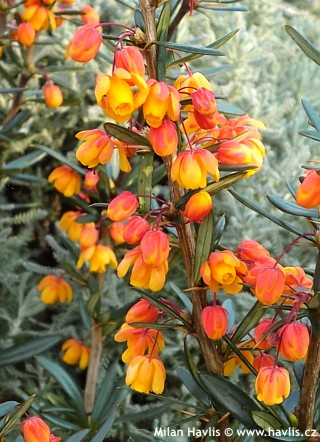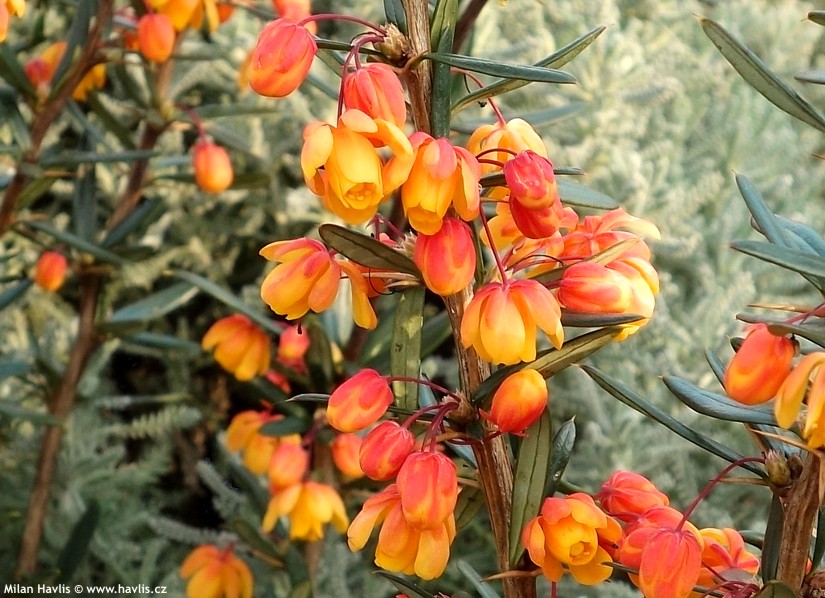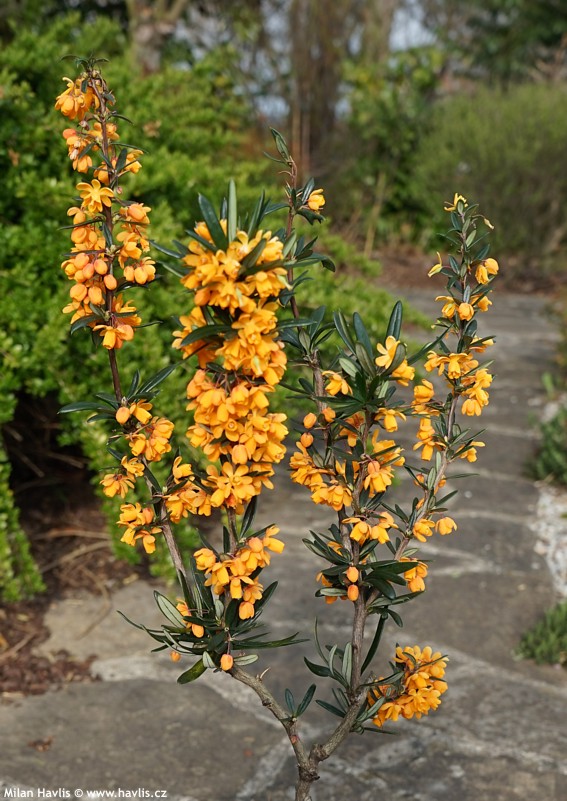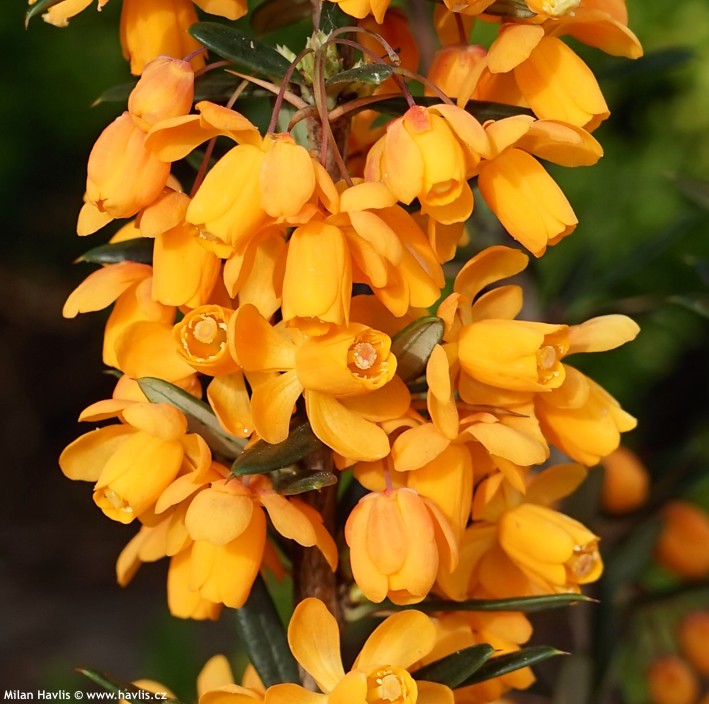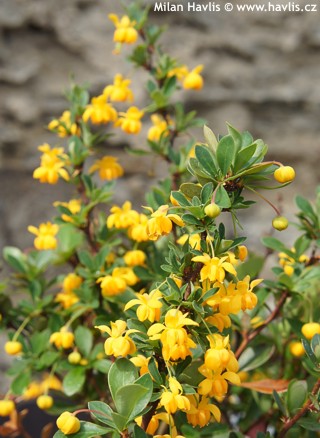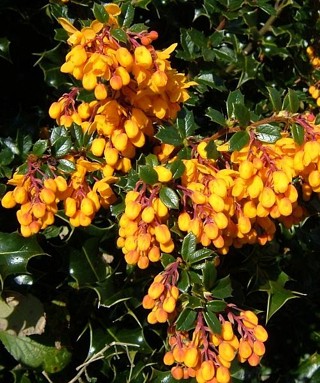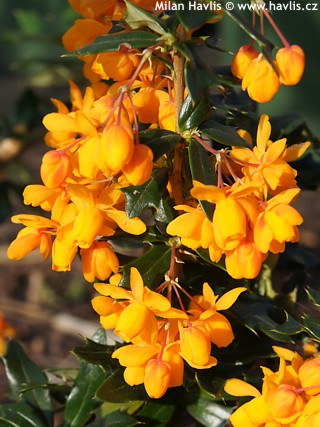Berberis linearifolia 'ORANGE KING' narrow-leaved barberry
size/type
medium-sized shrub,medium-sized shrub
usual height
1,5-2,5m
usual width
1-1,5m
leaves
evergreen broadleaf
colour of leaves
flowers
showy
colour of flowers
blooming time
April-May
location
full to partial sun
soil type
any (acidic to alkaline)
soil moisture requirements
evenly moist (dislikes drought)
USDA zone (lowest)
7 (down to -23°C)
winter protection
for zone 5+6

for zone 7

categorized
Berberis
Narrow-leaved barberry is an evergreen shrub from South America. It is found in slightly colder, elevated parts of Chile and Argentina, especially around the volcanoes of the Ands. It is cultivated and new varieties are bred for abundant, colorful flowering, and evergreen leaves.Description of the plant:
Orange King is one of my favourite ‘royal couple’ barberry variety, right next to Apricot Queen. It makes a plentiful of small but fantastic deep orange flowers opening from scarlet red buds. They hang on the branches like little bells and resemble miniature fires, only upside down with their glowing red tops and orange flames at bottoms. Blooming begins in April and continues for 6-8 weeks. Flowers may be followed by small, dark purple blue edible fruit which is popular mostly among kids who like its equally sweet and acidic flavour. They don’t even mind the prickly thorns alongside every branch. Rosemary-like leaves are evergreen, very narrow, 3-5 cm long, dark green, leathery, and glossy.Narrow-leaved barberry makes an upright bush, slow growing when young, speeding up with age, making slightly arching shoots on taller plants. Pruning, if needed, is recommended in early summer immediately after flowering. Spring pruning considerably reduces flowering. Evergreen barberries will grow in almost any well-drained soil that will not dry out for longer than a month. No fertilizing is needed but is possible, and will result in a bushier shrub with larger leaves. It is hardy to about -23°C (USDA zone 6) if covered with snow for the worst part of winter so keep it mulched at all times.
Last update 21-01-2016
QUICK PRICE OVERVIEW
CURRENTLY SOLD OUT
WANT TO TRY A SIMILAR PLANT?












